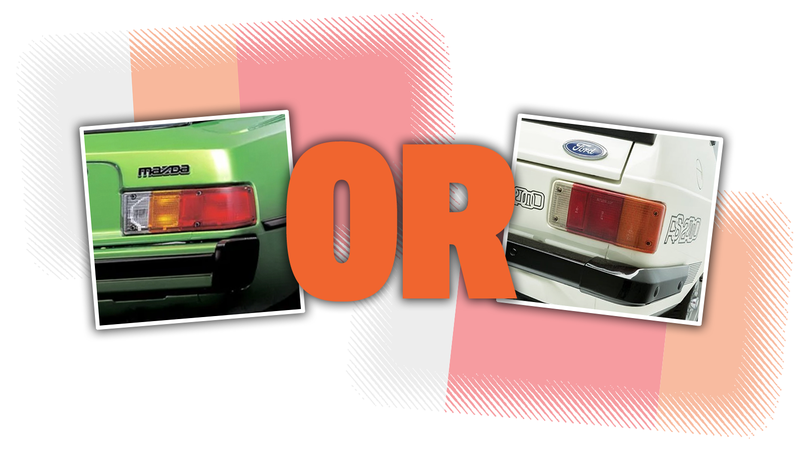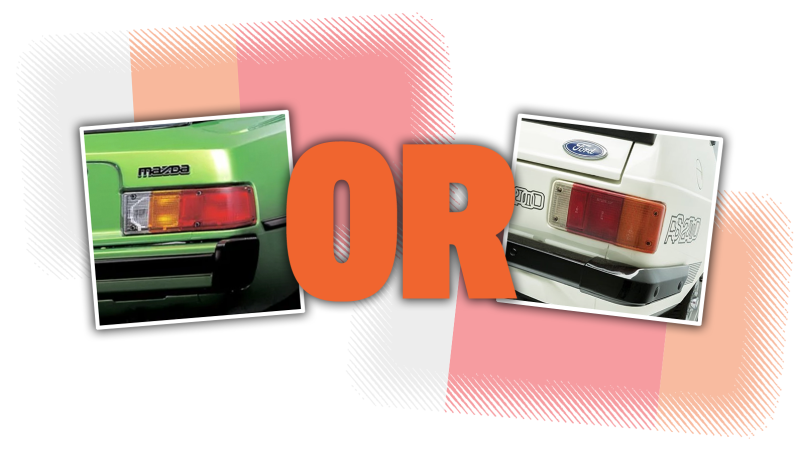
One of the advantages of having to fill in on a Saturday is that I feel like it’s okay to post things that may be, normally, even too niche or narrow or, let’s face it, idiotic, even for me. But it’s Saturday, so all bets are off! Which is why I’m going to ask you for your opinion on something I’d be stunned if anyone already has any opinions about: which taillight arrangement is better? Orange-red-clear, or red-orange-clear?
Now, there’s some caveats, of course, as you can imagine in anything as important as this: I’m only talking about taillights with three color, using amber/orange for the turn indicator, not just red, like we Americans often like.
I’m also talking about horizontally-oriented lights sectioned into thirds vertically; there’s a likely infinite way to section taillights, but for today I’m just pitting two of the most common methods against each other, because I want to constrain the scope of the debate, at least for now.
Let’s look at the two approaches and consider what we prefer. I’m going to use Mazdas as examples, because they have a few cars that switched between these two types. Let’s start with the RX-7:

Advertisement
Hm. It’s tricky, right? Let’s go over some advantages and disadvantages of each:

For this layout, I think there’s an aesthetic advantage. The progression of colors feels almost like a gradient, which I find visually pleasing.
Advertisement
Also, this arrangement allows for the red section to wrap around the corner of the car, which permits the rear side marker lamp/reflector to be integrated into the taillight unit, saving money and offering a cleaner design.

For this layout, I think the key advantage is that, conceptually, it makes more sense to include the turn indicator on the outer corner of the car. That just feels more right for a turn indicator, and allows the indicator to be seen from the side of the car if it wraps around a bit, which gives a safety advantage.
Advertisement
This method does require the use of a separate rear side marker lamp, or at least another red lens in part of the taillight housing if it wraps around the corner.
Mazda had the same indecision on their GLC as well:

Advertisement

And, of course, other manufacturers all had their own preferences. Automotive lighting designers must have had their own opinions, but so far none I’ve spoken with have ever really articulated why one arrangement was chosen over another. The fact that they occasionally changed back and forth, though, must mean that someone gave a shit, right?
One case I’ve never really understood the taillight color arrangement decision made was Porsche, for their 911s in the late 1970s and 1980s. This is one of the few cases where it would seem one layout actually would make more sense than the other, but for some reason, Porsche seems to have chosen the opposite path. here, look:

Advertisement
Also, this layout sandwiches the clear reverse light lens between the red and amber sections, which is a different discussion. For what it’s worth, I’m fine with this.
So, for most of the world, the 911 had amber indicators at the corner that wrapped all the way around the car; most European countries did not require side marker lamps, so this was fine. In America, though, cars had to have a red rear side marker lamp and reflector, so Porsche went with a red turn indicator that incorporated the marker lamp.
Now, normally, the largest section of a taillight is given to the red stop/tail section, with the turn signal section and reverse lamps being smaller. Porsche was doing the opposite here, relegating their stop/tail to a small square section (not counting the optional heckblende).
Advertisement

So, why do it this way? If Porsche reversed the red and amber sections, like you see here, they could have just had one global taillight lens that would work with a red rear side marker in the important North American market, but retained the amber indicator for everywhere else.
Porsche didn’t ask me about this, though. I’m told they didn’t even try.
Holy shit, I can’t believe I’ve written this much about this. What the hell is wrong with me? Anyway, please make me feel better by showing me you have opinions and thoughts of this of your own. Then I won’t feel so alone.















